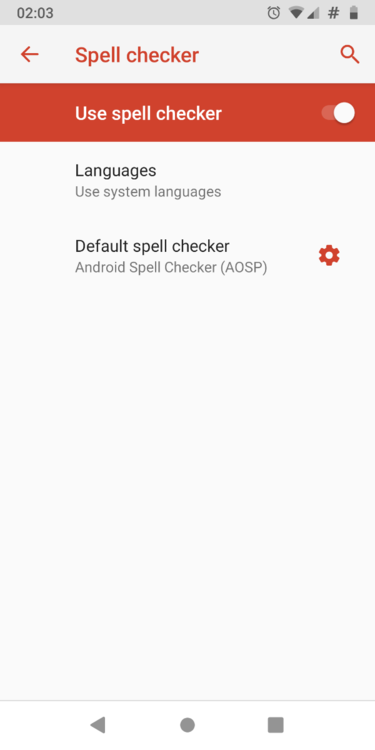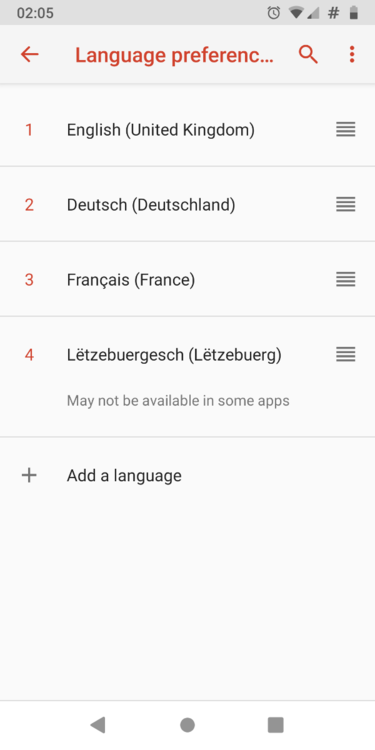
claude0001
-
Content Count
799 -
Joined
-
Last visited
-
Days Won
127
Posts posted by claude0001
-
-
31 minutes ago, Hook said:
I don't know much about UT, but as I mentioned above, I think Lineage is awaiting the firmware update. The fact that Droidian ans Sailfish are advancing, I think, shows that the community is interested in this phone.
In the end, all those OS's rely on the stock Android 11 core. I do not think UT or LOS are any more dependent on an updated firmware from F(x)tec than SFOS or Droidian. But I can see your point that the latter two indeed show that not all is lost. Probably I'm just overly pessimistic ...
-
3 hours ago, Hook said:
I think this really does misrepresent what they said. They said the alternative OSs are community run projects by volunteers and progress depends on their time (true), but that they are working closely with those volunteers to provide as much support as possible. There was no comment about ask the devs.
OK, ok, I was probably overshooting a bit. Sorry. 🙂
However, my point was not about something specific they wrote in this latest update. It's more that I dislike the overall trend: One year ago, F(x)tec had an in-house developer actively working on Pro1/X kernel mainlining and alternate OS porting. At that point they seemed pretty serious about delivering a phone with official, out-of-the box LineageOS and UbuntuTouch support. As I wrote previously, this was a very important aspect of the initial Pro1-X concept.
During this year, they first abandoned the "out-of-the-box" part (by shipping all phones with Android), then - slowly but steadily - walked away from the "official" aspect (by admitting that the porting was essentially done by independent community devs after all).
I am ready to believe that, even when not driving the effort themselves, they still want to support community devs -- but they are obviously quite inefficient even at that. I find it worrying that today's most advanced alternative OS's for the Pro1-X (SailfishOS and Droidian) are precisely NOT the ones F(x)tec initially wanted the Pro1-X to ship with (LineageOS and UbuntuTouch). How does that fit? The pessimistic explanation would be that they have alienated their community ... I hope that is not the case.
-
 6
6
-
-
OK ... this does not seem to go well.
According to the past updates, almost all units should have been sitting at "their" warehouse (really Expansys', I understand) already for four (4) months. Given that Expansys are obviously able to ship their own Pro1-X's without any problems, I think F(x)tec should stop blaming "logistical issues" in "China and Hong Kong" for everything ... they must have at least some part in this mess and I think people would appreciate if they admitted that.
However, the most disappointing part about the last few updates is how alternative OS development is increasingly being framed as "not our problem ... community thing ... ask somewhere else". Guess what? We are asking "the community" and get responses like "we do not know that device, ask at F(x)tec". Seems like everyone is pointing at everyone else. Is anyone actively working on a LOS port for Pro1-X? If one remembers that the Pro1-X was once branded as the "XDA phone", it is quite saddening that alternative OS development is seemingly no longer given any priority at F(x)tec ...
Sorry for the outburst. Had to vent. Please proceed, nothing to see here ... 🙂
-
 3
3
-
 1
1
-
-
Another month, another update of good-ol' LineageOS 16.0! Head to
https://findus.zwergenschaenke.net/~puma/linux.html#lineagepro1
and fetch the ROM dated "20221214". It includes backported ASB fixes up to patchlevel "5 December 2022".
The warning about lack of upstream code-review still applies (see above). All I know is that the ROM seems to work fine on my own device. Also, as I wrote last month, my modded keyboard driver no longer reports every key-press to the kernel log. Send me a PM if you prefer a build with this debugging info enabled.
As usual, a tarball of all mods with respect to the official LOS-16.0 tree can be downloaded at the link above.
Newcomers be reminded that this is for the original (SD835) Pro1 only.
-
 2
2
-
 2
2
-
-
I believe @TechLvr is using my (LOS16) rom. Therein, the respective section under "System > Languages & Input" is indeed called "Input assistance".
In my case, the spell-checker panel looks like this:
Where I have several "System languages" selected under "Languages & input":
During typing one can then switch between those on-the-fly using the "globe" icon on the on-screen keyboard, or using "FxTec+Space" on the HW keyboard.
Did you install any alternative keyboard apps?
-
 1
1
-
 1
1
-
-
2 hours ago, Name_not_avail said:
The biggest downgrade is the unusable microphone while making LTE voice calls
While I believe this problem is real, it has almost certainly nothing to do with the Pro1X's CPU or GPU performance.
-
 1
1
-
-
All I can say up to now is that the raw GPU performance of the Pro1-X is indeed much lower than the Pro1's. In Super Tux Kart (love that game!) the X reaches somewhat less than half the frame rate, given identical graphics settings (top: Pro1, bottom: Pro1-X):
While this is unfortunately quite noticeable in a fast-paced game like that, it of course does not matter much in normal phone use.
In many cases the Pro1-X actually feels faster than the Pro1, e.g. when launching apps, as if the disk-IO was faster. However, that may also be related to Android 11 (on the Pro1-X) being better optimized than my good-old Lineage 16.0 (on the Pro1); or simply due to the fact that, up to now, I have way less stuff installed and running in the background on the Pro1-X compared to the Pro1 (which is my daily).
Once Lineage becomes available, I plan to port my Debian-chroot setup to the X, which should provide me with all the low-level Unix benchmarking tools I'm used to, and allow for a more in-depth comparison of the two devices.
-
 2
2
-
 2
2
-
-
I have updated LineageOS 16.0 to include backported security fixes up to ASB patchlevel "5 November 2022". At
http://findus.zwergenschaenke.net/~puma/linux.html#lineagepro1
grab the ROM dated 20221117. Remember that this is for the original SD835 Pro1 only.
The note about lacking upstream code-review from previous months still applies. All I can say is that the build seems to run without issues on my own prawn.
Note that, with this release, I have added a compile-time option that disables most of the kernel messages generated by the keyboard driver. I always disliked how every single keypress was getting reported in dmesg, and those messages never actually helped me debug anything, so ... If you want to use LOS 16 and keyboard driver logging is really important to you, send me a PM, I can then make a customized build for you with the debugging info re-enabled.
As usual, a tarball of all my mods respective to the official lineage-16.0 branch is available at the link above.
-
 2
2
-
 1
1
-
-
So, the speaker issue is definitely improving.
With the battery fully charged (and /sys/class/power_supply/battery/voltage_now >~ 4100000 µV), the tapping sound reappeared sometimes while changing the volume of a playing youtube video, though not to the extend to make the video unwatchable.
Now, with the battery charge at 72% (/sys/class/power_supply/battery/voltage_now ~ 4000000 µV), I'm back to "cannot reproduce" ...
I am now quite confident that this problem will quickly go away with ageing of the battery, as others have observed, and I regret opening the Pro1-X for this (breaking a grand total of three of the tiny grounding springs surrounding the board in the process - do not insert your spudger to deep while opening the bottom shell!).
-
 4
4
-
-
-
On 9/28/2022 at 12:27 PM, claude0001 said:
But what does this mean regarding native HDMI-support in Android/LineageOS. Will it ever work?
What about the convergence mode of UbuntuTouch? Any hope for that?
Replying to my own question: Seems like it doesn't look very good for HDMI-out on the Pro1X, at least when it comes to alternative OS's.
Unsurprisingly, I can confirm that my all-in-one UGREEN USB-C dock, which works flawlessly with the Pro1, does nothing regarding HDMI when connected to the Pro1X (also Ethernet does not work with the X btw ...).
After a bit of reading, I wonder whether the solution that was presented during development of the Pro1X is actually using any native "HDMI-out" features of the SoC. Rather, it seems to implement an MHL interface and needs a proprietary APK to send the screen content to the HDMI-end via USB. This might explain why Apps for playing DRM-protected content (Netflix, Amazon Prime, ...) cannot display on the HDMI screen, as admitted in the product descriptions.
Watching Netflix on a hotel TV was the only practical use I've ever made of my Pro1's HDMI-out. Bummer ...
-
 1
1
-
 3
3
-
-
On 11/3/2022 at 8:01 AM, IMD said:
I think it is not related with temp or charging state.
So I started playing around with my Pro1-X again.
After the device being shelved for ~1.5 weeks, the battery is now at 61% and /sys/class/power_supply/battery/voltage_now never exceeds 3870000 µV. In this state, I cannot reproduce the speaker issue!
So, maybe, it indeed occurs only on brand-new devices (and batteries) where the voltage exceeds 4.1 V significantly after charge ... ? This might explain why the problem goes away after some time of using the Pro1-X.
edit: Re-charging the Pro1-X now, to check whether the problem comes back with battery full.
-
 3
3
-
-
5 hours ago, JECE said:
As in, should I raise my old complaints about the faulty speaker on the device that I mentioned before?
Without knowing how well they are prepared for handling mixed tickets, my gut feeling is it is probably better not mix.
The tapping-sound problem with the bottom speaker has been reported by several users (including myself) in another thread and there are hints this may be a firmware/software problem they are working on. @Casey promised to take home our reports and come back to us once more is known.
-
 2
2
-
-
On 11/4/2022 at 10:56 PM, brunoais said:
I'm using OS V. 2.1.5 non-GMS.
2.1.5-GMS-less also here. And the problem is definitely there. So whatever fix they prepare, it's not in that ROM.
-
 2
2
-
-
1 hour ago, EskeRahn said:
Usually that shift is invisble for the user though
Well, let's say they are not "apparent" during normal usage. But @Rob. S. is specifically using advanced tools to monitor the charging process. I guess, otherwise he would also not notice this.
Might be somethign else in the end, but especially the fact that the current decreases towards the end of the charge is pretty normal, I think. I see that also when charging my Pro1 using my solar-panel charger (which includes a built-in current gauge).
-
 2
2
-
-
As far as I know, there is a switch from current-control (i.e. constant charging current) to voltage-control (constant charging voltage) at some point during the charge, which leads to a decreasing current as the charge reaches its maximum value. I thought that was standard for any Li-ion battery.
-
 1
1
-
 1
1
-
-
1 hour ago, thodin said:
If anyone needs this file
There is an unofficial website that keeps track of all LOS versions no longer available at lineageos.org:
https://lineageosroms.com/pro1/
Haven't used it and don't know how reliable they are. But if the code is signed ...
-
 1
1
-
 2
2
-
-
3 hours ago, IMD said:
I want schematics...
Before we tear our phones apart any further it would be good to know whether F(x)tec are indeed aware of this problem and are planning a fix via firmware update. The (initial) October update can be interpreted in that way, but the wording is quite vague ...
-
 1
1
-
-
I use my Pro1 as daily driver with my self-built LineageOS 16.0 and a Debian 10 (actually Devuan 3) desktop GNU/Linux system running permanently in a chroot. For me this is the optimal combination of an Android(-like) environment with the option to do serious (desktop) work from the GNU chroot.
Of course, running a more native GNU/Linux system (if we agree on calling libhybris-based hacks "native" 😉 ) like UbuntuTouch, Sailfish, or Droidian is tempting, but -- realistically -- I cannot make it through the day without some Android apps I would not know how to replace (Firefox, Zoom, Öffi, Zoo for Zotero, ...) and I do not want to rely on something like Waydroid or Anbox for my job.
My Pro1X seems very promising (except for the right-speaker-bug that hopefully will be solved somehow). The keyboard responsiveness is much better than that of my >2 year old Pro1. The graphics performance is much worse, as expected, but I do not use the Pro1 much for gaming either. Currently my Pro1X is more or less shelved, but once LineageOS becomes somewhat stable, I will try to migrate my Pro1 setup to it.
-
 3
3
-
-
@IMD seems to be absolutely right. The speaker failures occur only when /sys/class/power_supply/battery/voltage_now exceeds approx. 4100000 µV. This explains naturally why the phenomenon is more apparent when connected to a charger.
The question remains whether F(x)tec will indeed be able to fix this by a firmware update, or not ... 😞
-
 1
1
-
-
So I did open the phone yesterday and could not fix the issue using @spam71's recipe. I fiddled a lot with the spring contacts to the speaker, even while playing music through it: The problem seems to be independent of the electrical contact.
The popping does seem to come and go also in my case. Sometimes the speaker works at all volume levels, sometimes only at highest gain.
I will test if there is a correlation with the level of the battery charge. Thanks for the hint @IMD.
-
Consider that, concerning non-working sensors, the recommendation to do a full backup of the original Android system is largely obsoleted by the latest edit of the OP of this thread:
Concerning your connection troubles, I can only recommend to try different (USB) hardware. I ended up doing all my adb/fastboot business from a Raspberry Pi3 as my Thinkpads are seemingly to "advanced" for the purpose ...
-
45 minutes ago, Name_not_avail said:
the difference between slot a and slot b, and whether I have screwed something up
I think it is unlikely you damaged anything.
As you probably know, the A and B slots are a kind of safety net that (among others) allows the device to keep the previously running OS "in reserve" whenever an update is installed. The active slot basically flips between A and B everytime a new ROM is flashed. So whether A or B is the "right" one for installing Magisk simply depends on the number of previous flashings being even or odd.
-
 1
1
-
-
For the record: @Casey's instructions did work for me. It automagically flashed the right slot, which I think was "b" in my case.
-
 2
2
-





PRO1, LineageOS 16.0 Official Builds: Discussion
in General Discussion
Posted · Edited by claude0001
🎄 Christmas Update 🎄: A new build of LineageOS 16.0 (for SD835-Pro1) is available at
https://findus.zwergenschaenke.net/~puma/linux.html#lineagepro1.
Go for the ROM dated "20221222". This build enables kernel support for PlayStation DualShock gamepads, inexplicably missing from the standard defconfig. 😉 There are no other changes since last week. As usual, my collection of mods relative to upstream is available.
Why this is important: Turns out my son enjoys SuperTuxKart as much as I do, and he actually got his own DualShock3 for St. Nicholas Day. So we thought we could use the Pro1 as a mobile game console by connecting our controllers via a USB dock. What a disappointment when they were initially not detected! These are the things that remind you of the benefits of open source: 😎
Merry Christmas!